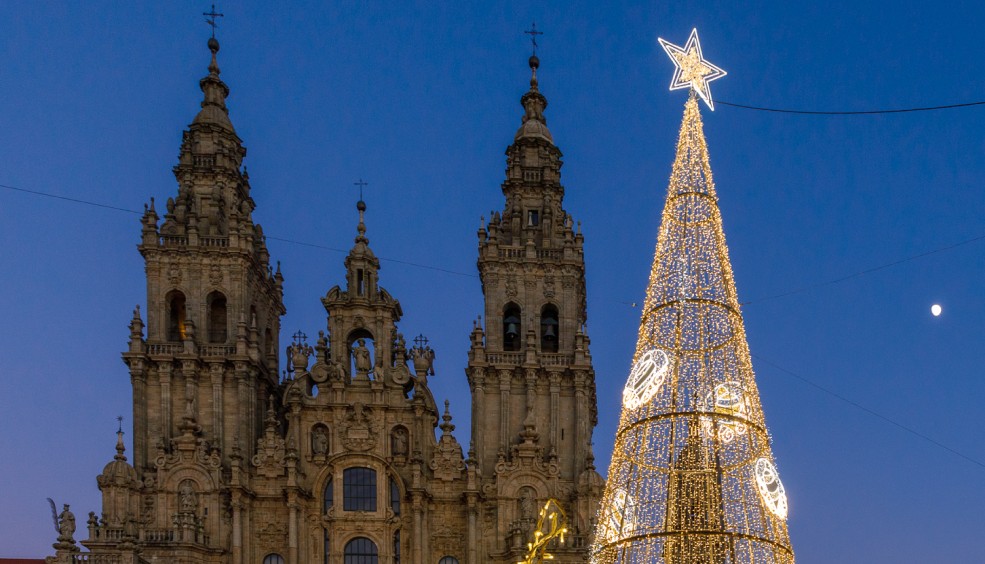Pairing of gastronomy plans in Santiago
Gastronomy tourism never goes out of fashion, and much less in a place like Santiago de Compostela (Galicia) which likes to boast - and rightly so - about the rich variety and quality of its shellfish, fish and meat dishes. The gastronomy festivals, traditional markets and food markets are ample justification for a pilgrimage to the capital of Galicia.
more info2 days in Santiago de Compostela
Culture, architecture, art, tales of brave pilgrims reaching their final destination, tapas, wine, merriment and much more. Two days in Santiago de Compostela is like two days in paradise. Shall we?
more infoSeven Reasons to Visit Santiago de Compostela at Christmas
Santiago de Compostela is the ideal destination for a Christmas getaway. It's almost impossible to put into words how magical every corner of this fairy-tale city is at Christmas.
more infoOutings Near Santiago
Santiago’s zone of influence stretches through a score of municipalities, ranging from A Coruña to Pontevedra, all articulated around the river Ulla, while various branches of the Road to Santiago run nearby, too.
Hardly 10 km from the city lies a magical spot – Pico Sacro, a legendary hill as far as Galician culture and the Jacobean tradition are concerned. Located south-east of the city, its unusual outline rises sharply to a height of 533 metres. Santiago and the skyline of its Cathedral towers are visible in the distance from its summit.
Galicia is green, and the city of Santiago is also surrounded by green. Nature lovers can go on outings from the city to such amazing spots as the Fervenzas do Toxa, or to Insua; to unique forests like the Fraga de Catasós, with chestnut trees towering over thirty metres, or to mountain ranges like O Candán, with its ancient landscapes and great open spaces.
In a radius of just fifty kilometres you can discover the monumental wealth of such historic towns as Padrón or Melide, both directly related to the Road to Santiago; pazos (country homes) like the Pazo de Santa Cruz de Ribadulla, noteworthy for its camellias and centuries-old olives trees, and even places of quiet and repose like the Carboeiro Monastery, surrounded by splendid natural scenery.
Needless to say, being Galicia, it is also worth planning outings to try the delicious and abundant cuisine in Santiago’s environs, characterised by the use of fresh produce in season. Be sure to try the Padrón peppers, trout and lamprey, cocido (stew), beef, cheeses, melindres (honey fritters), filloa crêpes, almendrados (macaroons) and rosquillas (a ring-shaped pastry), and to end your trip by toasting with a local spirit.
Come and discover all these gems for yourself! Check out our flights here.
For further information on Santiago: www.santiagoturismo.com
For further information on the environs of Santiago: www.areasantiago.es
more info





